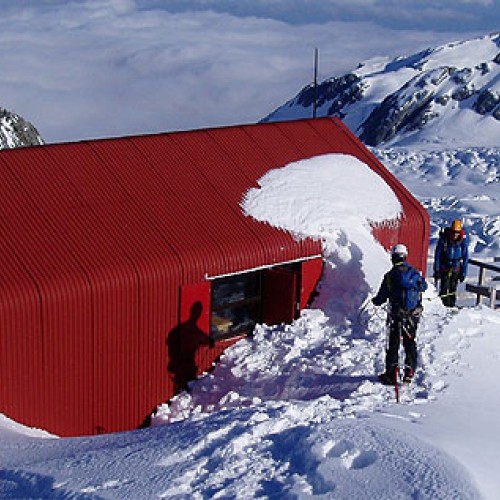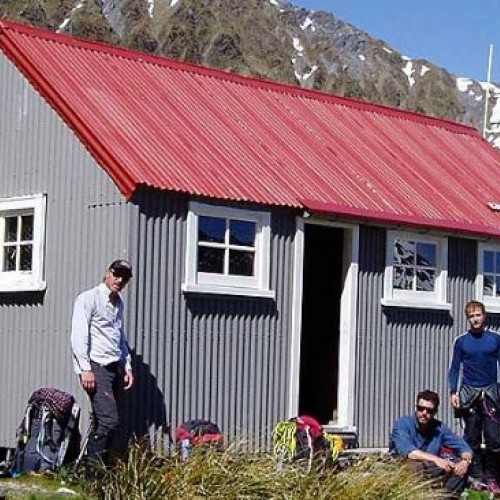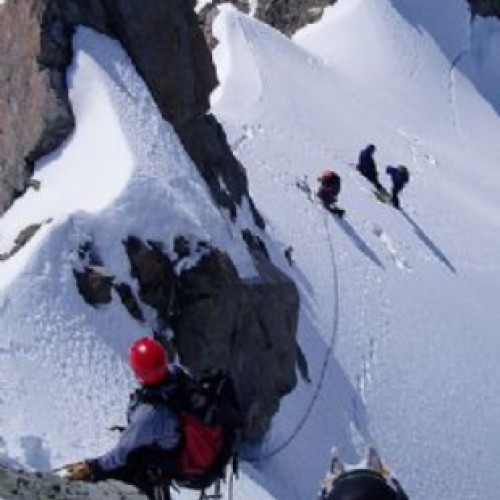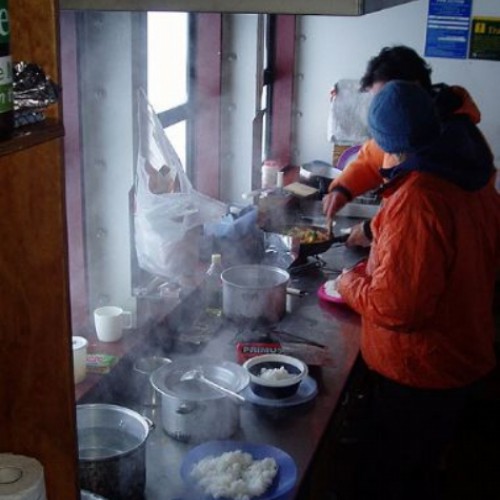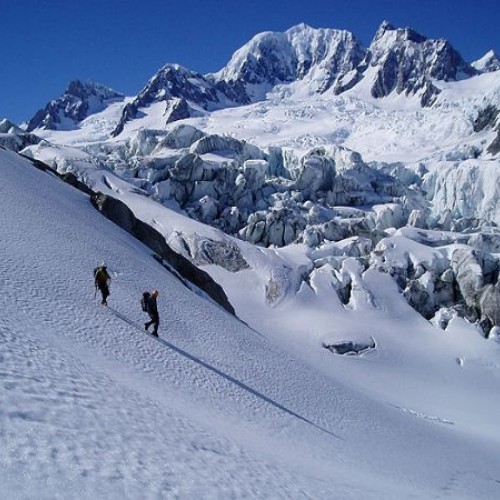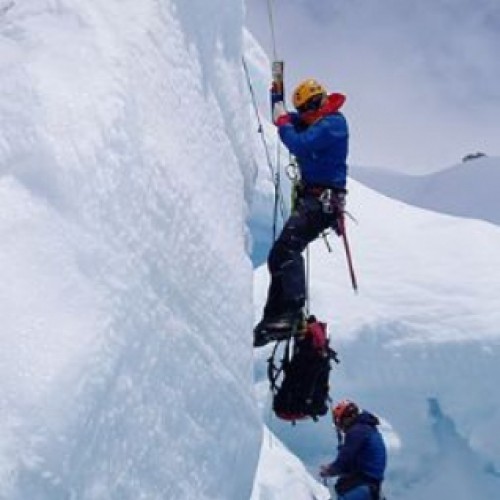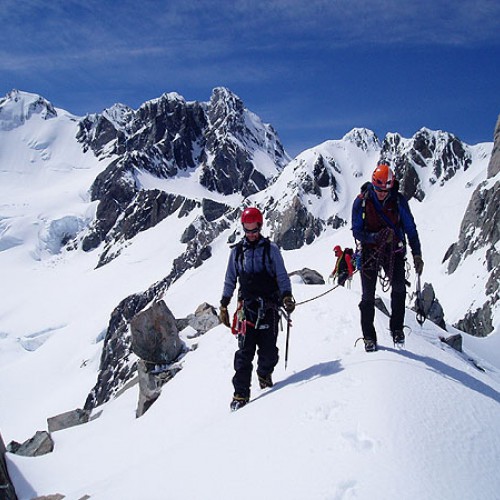Snow and Ice Guide Training Course
This guides' training course is to take solid amateur mountaineering skills and knowledge and teach the candidate how to change/modify techniques, skills and knowledge into professional mountain and ski guiding techniques, skills and knowledge.
Note: From 1 October 2015 the Snow and Ice Guide Training Course will become a seven (7) day course and include a 1-day River Crossing Course.
Outline:
- Crevasse rescue with dynamic rope
- Glacier travel with client(s)
- Snow and Ice guiding anchors; equalization; belay techniques, appropriate application of.
- Shortroping 1, 2 and 3 clients on snow
- Short pitching/pitching on snow
- Cramponing equipment including ice axe/hammer
- Step cutting/stance making
- Snow and ice climbing technique
- Hut management, cooking, hygiene
- Trip planning
- Client safety in the alpine environment/personal safety
- Emergency procedures/issues for alpine environment
- Mountain weather
- Navigation and route planning
- Application of guiding technique and decision making
- Impromptu Formal Lecture Presentation
Outcome:
General assessment of the candidate's overall mountaineering skills will be done. A positive recommendation for their particular pathway is required for the candidate to be able to progress to their appropriate Level 1 guides course.
- Barron Saddle
- Fox Glacier area
- Franz Josef Glacier area
- Tasman Saddle area
- Plateau area
- Bonar Glacier area
Crevasse Rescue With Dynamic Rope
- Unassisted Prusik
- Holding the Fall/Slide
- Drop loop assisted hoist
- Drop loop unassisted
- Non drop loop hoist eg 6:1
Glacier Travel With Client(s)
- Guide - how much rope to carry
- Appropriateness of coils
- Tying off coils
- Knots in rope
- Client brief and communications
Snow & Ice Guiding Anchors
- Fast equilisation methods
- Belay techniques
- Appropriate application
Shortroping 1, 2 & 3 Clients On Snow
- Guide on end of rope - inline method
- Guide on end of rope - independent 'V' method
- Guide in middle of rope
- Hand wrap
- Figure 8 handle
- Disappearing handle
- Using cow's tail/daisy chain and clipping into figure 8 for glacier shortroping
Short Pitching/Pitching On Snow & Ice
Equipment For Guiding
- Snow stakes
- Crampons
- Ice axe/hammer
Step Cutting & Route Preparation
- Single line up and down
- Double cut up and down
- Stance making
- Step plugging, reinforced steps, steps the night before
Snow & Ice Climbing Technique
- French technique considerations when guiding, especially short roping
Hut Management
- Working around other users
- Cooking & presentation standards
- Hygiene
Trip Planning
Client Safety In The Alpine Environment
Personal Safety
Communication With Client
- Client equipment checklists
- Guide equipment checklists
- Briefings
- Encouragement, being assertive when appropriate eg retreat
Emergency Procedures
- Communication device options - strengths and weaknesses
- Issues for alpine environment eg weather
- Shelters & bivouacs
Mountain Weather
- Theory
- Field observations
- Expected level of knowledge/understanding for a guide
Navigation
- Efficient use of map and compass
- Use of GPS for guiding
- Navigation plan
- Route Planning
Application Of Guiding Techniques
- Decision making
